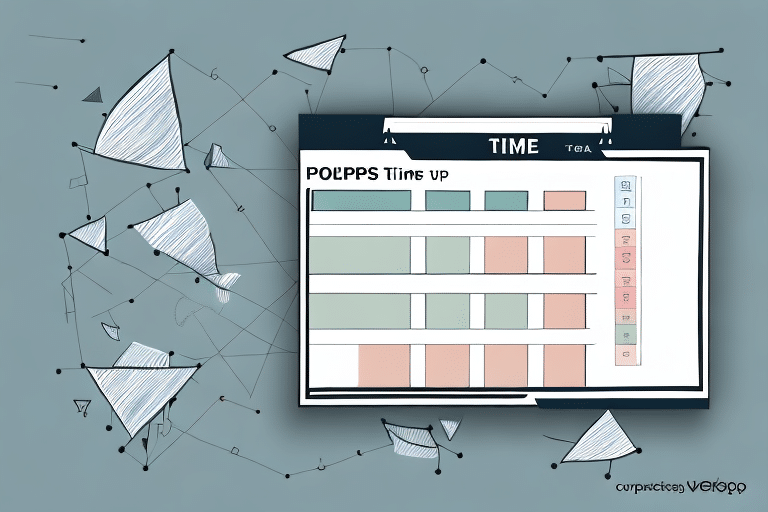What is the UPS Shipping Time Chart?
The UPS Shipping Time Chart is a comprehensive tool provided by United Parcel Service (UPS) that allows customers to estimate the delivery time for their packages. By considering various factors such as the origin and destination of the shipment, the chosen shipping service, and the size and weight of the package, the chart provides a guideline for expected delivery dates. This tool is essential for both businesses and individual customers to plan their shipments effectively and ensure timely deliveries.
Importance of the UPS Shipping Time Chart for Your Business
Understanding the UPS Shipping Time Chart is crucial for businesses that rely on timely deliveries to maintain customer satisfaction and operational efficiency. Here are several reasons why the UPS Shipping Time Chart is important for your business:
- Efficient Planning: By knowing the estimated delivery times, businesses can schedule shipments to align with customer expectations and inventory management.
- Cost Management: Choosing the appropriate shipping service based on delivery time can help businesses optimize shipping costs, avoiding unnecessary expenses on expedited services when standard shipping suffices.
- Customer Satisfaction: Timely deliveries enhance customer satisfaction and trust, leading to repeat business and positive reviews.
- Operational Insights: Analyzing shipping patterns can help identify bottlenecks and areas for improvement in the supply chain.
According to a Investopedia report on logistics, efficient shipping processes can reduce operational costs by up to 20%, underscoring the financial benefits of utilizing the UPS Shipping Time Chart effectively.
How to Read and Utilize the UPS Shipping Time Chart
Reading the UPS Shipping Time Chart involves understanding the different shipping services offered and the corresponding delivery times. Here's a step-by-step guide:
- Select the Shipping Service: UPS offers various services such as UPS Ground, UPS Next Day Air, and UPS 2nd Day Air. Each service has a different delivery time frame.
- Identify Origin and Destination: Enter the ZIP codes or locations of where the package is being shipped from and to. The distance between these points affects delivery time.
- Calculate Estimated Delivery: Based on the selected service and the distance, the chart will provide an estimated number of business days for delivery.
It's important to note that the UPS Shipping Time Chart provides estimates and actual delivery times may vary due to unforeseen circumstances such as weather conditions or customs delays.
Factors Influencing UPS Shipping Times
Several factors can influence the shipping times estimated by the UPS Shipping Time Chart:
- Shipping Service: Different UPS services offer varying delivery speeds. For example, air services like UPS Next Day Air are faster than ground services.
- Distance: The greater the distance between the origin and destination, the longer the delivery time.
- Package Weight and Size: Heavier and larger packages may require more handling time, potentially affecting delivery speed.
- Time of Shipment: Packages shipped earlier in the day are likely to be processed and dispatched faster than those shipped later.
- External Factors: Weather events, natural disasters, and other unexpected occurrences can disrupt shipping schedules.
Calculating Delivery Time and Tracking Your Packages
To calculate the estimated delivery time using the UPS Shipping Time Chart:
- Select the appropriate shipping service based on your delivery needs.
- Enter the origin and destination locations.
- Add the estimated delivery time to the shipment date to determine the expected delivery date.
UPS provides a robust tracking system where customers can enter their tracking number to monitor the progress of their packages in real-time. Additionally, customers can opt for email or text notifications to receive updates on their package's status.
Choosing the Right UPS Shipping Service
Selecting the appropriate UPS shipping service is essential for balancing cost and delivery speed. Here are some tips:
- Assess Urgency: For time-sensitive shipments, services like UPS Next Day Air or UPS 2nd Day Air are ideal.
- Consider Cost: Ground services are generally more cost-effective for non-urgent packages.
- Evaluate Package Details: Larger or heavier packages might be better suited for specialized services like UPS Freight.
- Additional Services: Services such as signature confirmation, insurance, and Saturday delivery may add value depending on the shipment requirements.
By carefully choosing the right shipping service, businesses can optimize both delivery times and shipping costs.
Understanding UPS Fees and Charges Based on Delivery Times
UPS may impose additional fees based on the chosen delivery speed and other service requirements:
- Expedited Services: Faster delivery options like UPS Next Day Air come with higher fees compared to standard services.
- Additional Guarantees: Services that include delivery guarantees or specific delivery windows may incur extra charges.
- Special Handling: Packages that require special handling, such as hazardous materials or oversized items, may be subject to additional fees.
It's important for businesses to factor these additional charges into their shipping budgets to avoid unexpected costs. Detailed information on UPS fees can be found on the UPS official website.
Addressing Common Misconceptions About the UPS Shipping Time Chart
There are several misconceptions regarding the UPS Shipping Time Chart that can lead to misunderstandings:
- Guaranteed Delivery: The Shipping Time Chart provides estimated delivery times, not guarantees. External factors can affect actual delivery dates.
- Uniform Application: Delivery times can vary based on service type, destination, and package specifics, meaning the chart's estimates are not one-size-fits-all.
- Processing Time: The chart typically estimates transit time and does not account for the time needed to process the shipment before it is dispatched.
Understanding these nuances ensures that businesses have realistic expectations and can plan their shipments accordingly.
Best Practices for Optimizing Your UPS Shipping Experience
To maximize the benefits of the UPS Shipping Time Chart, consider the following best practices:
- Plan Ahead: Use the chart to schedule shipments during periods with expected higher delivery times, such as holidays.
- Utilize Tracking: Regularly monitor shipments using UPS's tracking tools to stay informed about package statuses.
- Leverage Technology: Integrate UPS shipping tools with your business systems for streamlined operations and better data management.
- Stay Informed: Keep up-to-date with UPS service updates, changes in delivery times, and any alterations to the Shipping Time Chart.
By implementing these practices, businesses can enhance their shipping efficiency, reduce costs, and improve overall customer satisfaction.
Conclusion
The UPS Shipping Time Chart is an invaluable resource for businesses and individuals seeking to optimize their shipping processes. By understanding how to interpret the chart, selecting the appropriate shipping services, and acknowledging the factors that influence delivery times, you can ensure timely and cost-effective deliveries. Additionally, staying informed about UPS's tools and best practices will further enhance your shipping experience.
Remember, while the UPS Shipping Time Chart provides helpful estimates, it's essential to remain adaptable and prepared for potential delays caused by unforeseen circumstances. Leveraging UPS's comprehensive suite of services and tracking capabilities will empower you to maintain control over your shipments and uphold high standards of customer satisfaction.






















